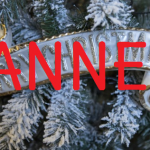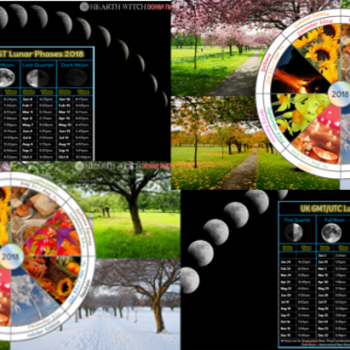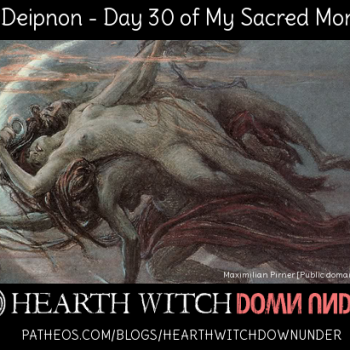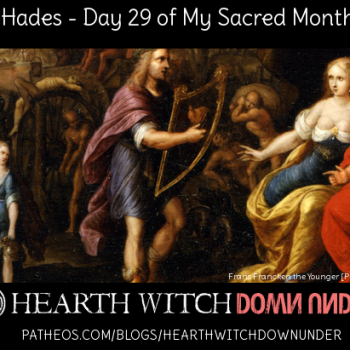One of the things that some, or perhaps many, Hellenes lament is the fact that we have no ancient festival (that we know of) for the winter solstice, to replace the commercial or Christian Christmas, and the Pagan Yule. This is probably what was in the mind of Hector Lugo when he created the Heliogenna festival.
Heliogenna is a thoroughly modern winter solstice festival created by Hector Lugo, whose website appears to no longer exist. I can’t say exactly how old this festival is, but I do know it is at least 6 years old – going by this blog post from 2010. According to various sources I have found, the Heliogenna festival was originally created to run for nine days, which were split into three parts. But it has been adapted to run over 3, 2 and even 1 days.
The basic premise of this festival is honouring Helios as He mourns the death of His son Phaethon, His mourning journey into the underworld and then finally His return to the world of the living (Helios, not Phaethon).
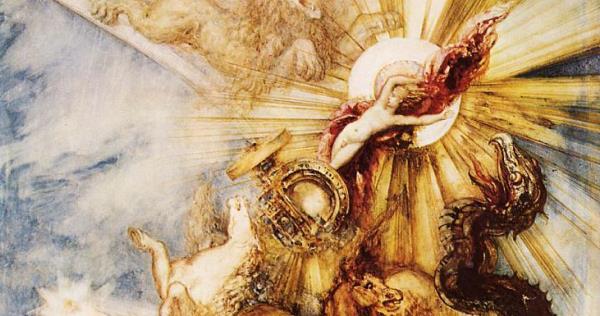
Nine Day Outline
Part 1 – Sunset. Days 1-3.
Honour Helios, Selene and Eos.
On these days the focus is on Helios and the death of Phaethon.
Burn an orange or yellow candle from sunset of each of these days, let them burn out by themselves.
Part 2 – Night. Days 4-6 (day 5 is winter solstice).
Honour no deities, but think on the darker aspects of the Gods, namely Helios, Hades, Persephone, Hekate and Hermes.
On these days the focus is on Helios travelling to the Underworld. Burn black candles from sunset on days 4 and 6, letting them burn out on their own. On day 5, the solstice, have out a black candle but leave it unlit.
Part 3 – Sunrise. Days 7-9.
Honour Helios and the Protogenoi.
The focus here is on Helios returning to the world of the living and bringing the sun back with Him (as the days will begin to get longer from here on out). Light yellow or orange candles from sunset on these days, letting them burn themselves out.
– – – –
This is about all I can find of the original festival as outlined by Hector Lugo and most of that comes from Hellenion – who also have a nice outline for the two day version of the festival. Cara Schulz of Hellenion also shares her ritual outline in the 2009 Neokoroi newsletter, that you can find linked here.
Dates for 2016
Nine Day Festival
Sunset, Day 1-3: December 17-19
Night, Day 4-6: December 20-22 (Solstice on day 5, the 21st)
Sunrise, Day 7-9: December 23-25
Three Day Festival
Sunset, Day 1: December 20
Night, Day 2: December 21 (Solstice)
Sunrise, Day 3: December 22
Two Day Festival
Sunset: December 21, solstice day
Night: December 21, solstice evening and night
Sunrise: December 22, from sunrise
– – – –
Personally I have little interest in the festival, given that it is summer here in Aus in December, but I thought it might be of interest to those in the north. I should also mention that the festival itself is a little contentious, just in case you decide to celebrate this festival and someone says something. Forewarned is forearmed as they say.
Some people hate this festival simply because it is modern – which is unfortunate and I don’t really get that reasoning. But each to their own. The main problem though seems to arise from the fact that this festival is a bit counter to Hellenic myth and lore. Namely, the idea of Helios, who could possibly be seen as one of the most Ouranic of the Ouranic deities, entering the underworld. Entering the underworld is considered to be utterly miasmic for most Ouranic deities.
However I did find reference to the epithet Plouton Helios (which would be Hades as a solar deity or Helios as an underworld deity), which from what I can find out about it, comes from the inscription at Smyrnos. I don’t have access to that, and know basically nothing about it, so I’m not sure what to think. Still, several sites (including Wiki, ugh) do state that some people in ancient times did hold to the idea of Helios descending into the underworld at night. I can only think that, if true, this would have come after the syncretisation with Egypts pantheon, inspired by the journey of Ra through the Egyptian underworld at night.
It’s a bit of a confusing issue, I don’t know that I can trace this any further right now, I don’t have the right resources. But this leaves room for one to see some ancient precedence for the idea of Helios entering the underworld. Whether it is enough would be up to the individual. I do know that many Hellenes are fine with some syncretism with Egypt and Rome, so perhaps it doesn’t matter anyway.
If you choose to observe this festival, I hope it goes well and you enjoy it.
References regarding Plutoun Helios and the Smyrna inscriptions


